Microeconomics NCEA Level 3 Economics
1/7
Earn XP
Name | Mastery | Learn | Test | Matching | Spaced |
|---|
No study sessions yet.
8 Terms

What is the relationship between Steve’s Marginal utility and demand for chips
As Steve consumes more chips, his marginal utility falls (from 40 utils on the 1st bag to 2 utils on the 6th) bag. Therefore, Steve is not willing to pay as much for the 6th bag of chips as the first bag of chips, meaning that as the price increases per bag he would demand less chips.
State the Optimum Purchase Rule Formula
A rational consumer will consume up to the point where P=MU.

Use the law of diminishing marginal utility and the optimal purchase rule to explain the law of demand as shown in Susan’s demand schedule in Table 2 above
Susan’s willingness to buy a paperback depends on the MU she receives from it and the price.
The Law of Diminishing Marginal Utility states that as Susan consumes each additional novel, the extra satisfaction she receives falls.
The Optimum Purchase rule states that Susan should continue to buy novels up to where P=MU.
Given that Susan’s MU for novel’s falls as the quantity consumed increases, the price must fall (to match the lower MU) before Susan will buy larger quantities.
For example, when the price is $40 Susan will consume one novel, as her MU of $45 is greater than the price of $40. If Susan buys a second novel, her MU will fall to $30. In order to get Susan to buy this second novel, the price will need to fall to at least $30 to match her lower MU.
This explains the law of demand; as the price falls from $40 to $30 Susan’s quantity demanded increases from 1 to 2 novels.
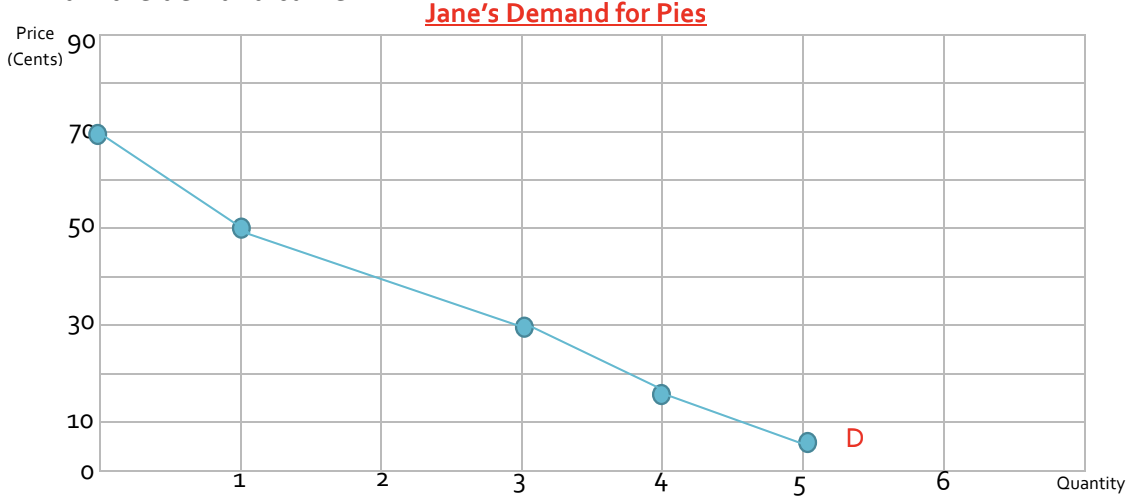
Explain why Jane’s demand for pies is downward sloping
Jane’s willingness to buy a pie depends on the marginal utility she receives from it relative to the price of the pie.
The Law of Diminishing Marginal Utility states that as Jane consumes each additional pie the extra satisfaction she receives falls. The Optimum Purchase rule states that Jane should continue to consume pies up to where P=MU.
If the price is 30 cents Jane will purchase 3 pies as MU=P. If Jane consumes the fourth pie, her MU will fall from 30¢ to 20¢ as can be seen on Table 2. She will only purchase the fourth pie, if the price falls to at least match her falling MU.
So, a price drop from 30¢ to at least 20¢ is required before she will buy the fourth pie.
This explains the law of demand; as the price falls from 30¢ to 20¢, the quantity demanded increases from 3 to 4 pies.
Therefore, Jane’s demand curve for pies slopes downward to the right.
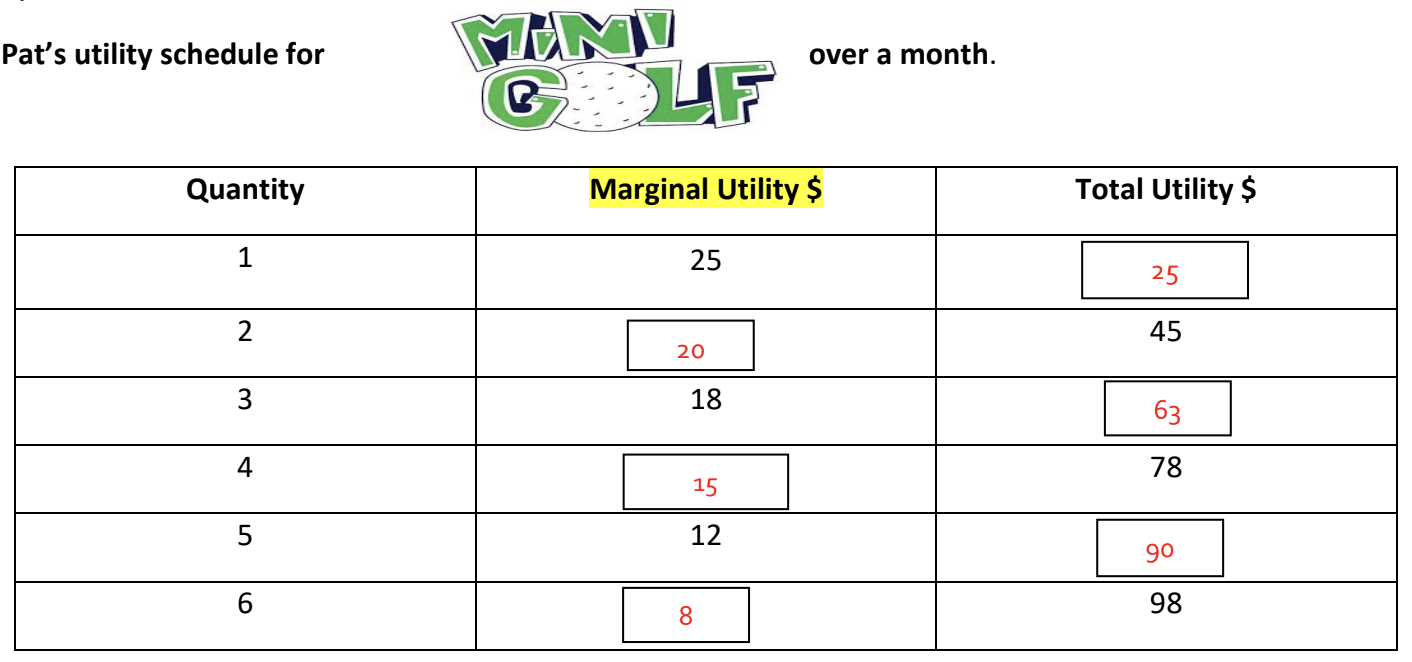
Describe the law of diminishing marginal utility
The Law of Diminishing Marginal Utility states that as a consumer consumes each additional unit of a good, the extra satisfaction they receives falls. This can be seen in Table A, where, as Pat purchases more mini golf games, his Marginal Utility falls from 25 utils on the first game to 8 utils on the 6th game.
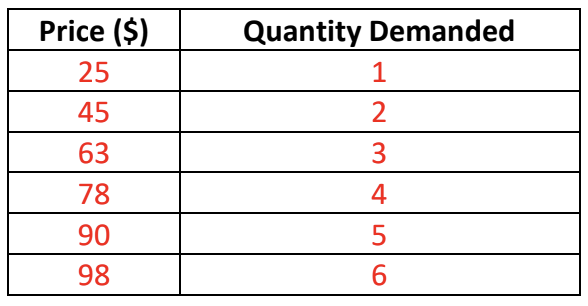
Describe the optimum purchase rule
The optimum purchase rule states that a rational consumer will continue to purchase a good up to the point where Marginal Utility = Price. This means that Pat will continue to purchase mini golf games up to a point where his MU = P.
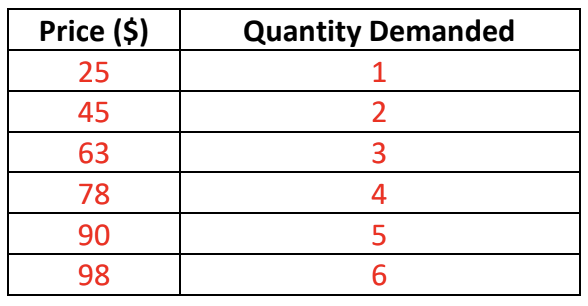
Fully explain, using relevant data, why Pat will play more minigolf at lower prices.
If the price of a minigolf game is $25, Pat will play one game of minigolf as MU=P. If Pat was to play a second game of minigolf, his marginal utility will fall to 20 (as can be seen on Table B). In order for Pat to purchase the second game of minigolf, the price must fall to at least $20 in order to match this lower marginal utility. Therefore, as price decreases, Pat’s quantity demanded of minigolf games will increase.
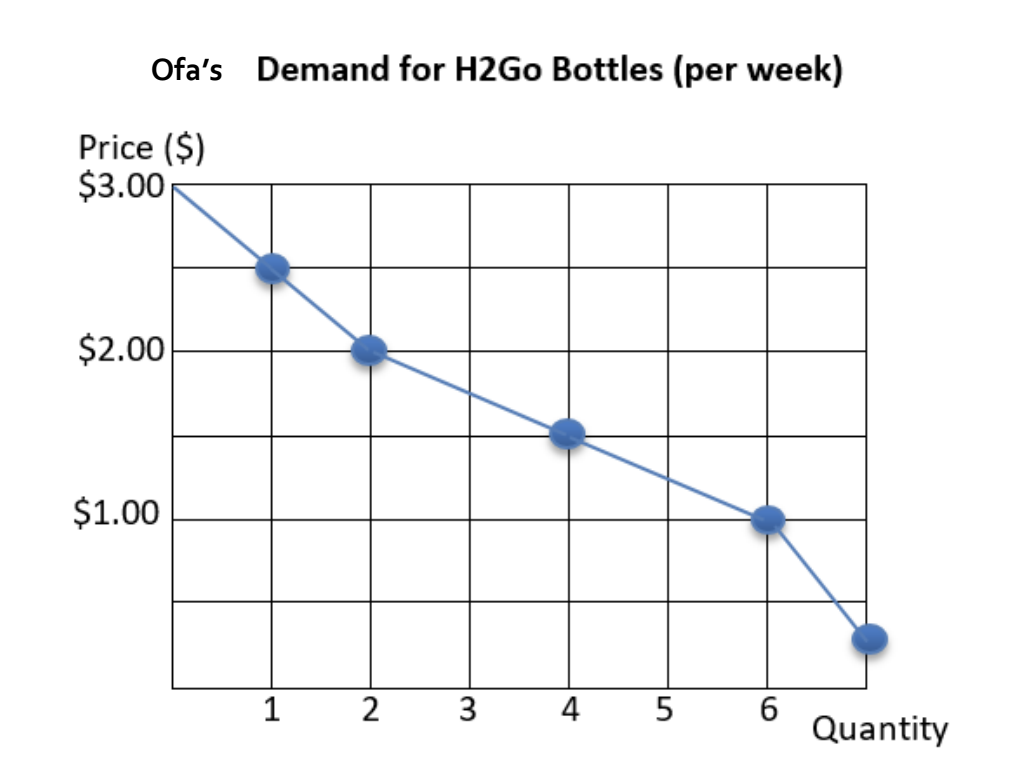
Use the law of diminishing marginal utility and the optimum purchase rule to fully explain why OFA’s demand curve for H2Go bottles per week is downward sloping (you must include relevant figures in your answer).
Ofa’s willingness to buy a H2GO depends on the MU she receives from it relative to the price.
• The Law of Diminishing Marginal Utility states that as Ofa consumes each additionalH2GO, the extra satisfaction she receives falls.
• The Optimal Purchase rule states that Ofa should continue to consume H2GO’s up to where P=MU.
• As Ofa’s MU for H2GOs falls as the quantity consumed increases, she will only buy additional bottles if the MU gained is ≥ than the price she has to pay for it.
• For example when the price is $2.50 Ofa’s will consume 1 H2GO as MU = P. If Ofa consumes a second H2GO her MU falls to $2.30. In order to get Ofa to consume this second H2GO the price will need to fall to at least $2.30 to match her lower MU.
• This is reflected in her demand schedule and therefore her demand curve - as the price falls from $2.50 to $2.00 Ofa’s quantity demanded increases from 1 to 2 H2GO’s, meaning the curve slops downward and to the right.